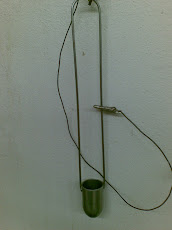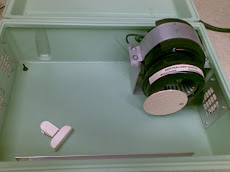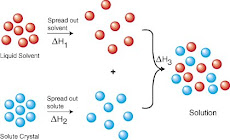Processing & Handling :: Process Chemicals
October 1, 2012
Acids Handling
General guidelines on materials, storage, pumping and other concerns for the proper and safe handling of acids
Inorganic acids play a major role in the chemical process industries (CPI). They are used as raw materials, catalysts or finishing and pH control agents in the manufacture of a wide range of chemical products, from fertilizers to detergents, and even foods. Given their widespread use, a major issue in the CPI is the proper and safe handling of the acids, the adequate materials selection for the pieces of equipment, piping and fittings used in the process, and the correct storage and even disposal of these materials.
This article covers the most important inorganic acids: sulfuric acid (H2SO4), nitric acid (HNO3), phosphoric acid (H3PO4), hydrogen chloride (HCl) and hydrochloric acid, and hydrogen fluoride (HF) and hydrofluoric acid; providing general guidelines on their physical properties, safety data, appropriate materials, storage, pumping and other common issues encountered when handling such fluids in the CPI.
Physical properties
Some acids are naturally present as liquids (H2SO4), some are solids at ambient conditions (anhydrous H3PO4), and others are gases (HCl, HF). Acids are very soluble in water and thus also widely available as aqueous solutions at different concentrations. Some of these solutions are also enhanced by dissolving additional compounds (for example, fuming sulfuric acid is made by dissolving SO3 in sulfuric acid).Given that there are several available grades, the knowledge of physical properties for each one is important in order to avoid freezing, the formation of hazardous fumes, or other problems when storing and handling these materials. The physical properties of the acids covered in this article are briefly presented here. These properties for common available grades are presented in Table 1. Figure 1 plots their vapor pressures at different temperatures.
| Table 1. Physical and Chemical Properties of Acids [1–5] | |||||||||||||||
| Units | H2SO4 | H3PO4 | HNO3 | HF | HCl | ||||||||||
| CAS Number | 7664-93-9 | 7664-38-7 | 7697-37-2 | 7664-39-3 | 7647-01-0 | ||||||||||
| Molecular weight | g/gmol | 98.079 | 97.994 | 63.01 | 20.01 | 36.46 | |||||||||
| Grade | Concen- trated | Fertilizer | Tower | Fuming, 65% oleum | Pure | WFNA | Strong | Common | Gas (anhy- drous) | Aque- ous | Aque- ous | Gas (anhy- drous) | Aque- ous | Aqueous. Technical Grade 22°Be | |
| Concen- tration | wt.% | 98 | 78–80 | 62–70 | 35 H2SO4, 65 SO3 | 75–85 | 100 | 90 | 68 | 100 | 48–51 | 40 | 100 | 50 | 33 |
| Physical state | Liquid | Liquid | Liquid | Liquid | Solid | Liquid | Liquid | Liquid | Gas | Liquid | Liquid | Gas | Liquid | Liquid | |
| Color | Color- less | Color- less | Color- less | Color- less | Color- less | Color- less | Color- less | Color- less | Color- less | Color- less | Color- less | Color- less | Color- less | Color- less | |
| Odor | Odor- less | Odor- less | Odor- less | Odor- less | Odor- less | Pun- gent odor | Pun- gent odor | Disagree- able (can cause choking) | Pun- gent odor | Acrid Odor | Acrid odor | Pun- gent odor | Pun- gent odor | Pun- gent odor | |
| Boiling point (760 mmHg) | °C | 340 | 200 | 155.85 | 151.1 | 212.8 | 86 | 120.5 | 121 | 20 | 108 | 112.2F | –85 | 100 | 83 |
| Vapor density (air = 1) | 3.4 | 3.4 | 2.2 | 2.5D | 0.7 | 1.97 | 1.3 | 0.62 | 1.267 | ||||||
| Specific gravity (H2O=1) | 1.83 | 1.72 | 1.57 | 1.56 | 1.87 | 1.50 | 1.50 | 1.50 | 1.17 | 1.14 | 1.03 | 1.16 | |||
| Liquid density (at 20ºC) | g/mL | 1.8361 | 1.7272B | 1.6105C | 1.5533 | 1.579A | 1.5129 | 1.4826 | 1.4048 | 1.202 | 1.159 | 1.251 | 1.164 | ||
| Melting point | °C | 10.5 | –4.29 | –36.55 | –36.98 | 42.2 | –42 | –41.6 | –83 | –40 | –62 | –114 | –46.2 | ||
| Dynamic viscosity (at 20ºC) | cP | 20.5 | 6.5 | 3.52 | 2.68E | 2 | |||||||||
| Notes: A Liquid Density of phosphoric acid at 75% B Liquid density of sulfuric acid at 80% C Liquid density of sulfuric acid at 70% D Vapor density of nitric acid at 65% E Dynamic viscosity obtained after extrapolation F Boiling point at 38.2% | |||||||||||||||
Sulfuric acid is a strong acid and a strong oxidizing agent; therefore it reacts violently with bases, combustible, reducing materials, water and organic compounds with the evolution of heat. It is highly corrosive to most common metals and forms a flammable/explosive gas.
Sulfuric acid is mostly used in the manufacturing of fertilizers, organic pigments, explosives and more. As a strong electrolyte it is used in electroplating baths for pickling, and for operations in the production of iron and steel. Moreover, it is extensively used as a solvent for ores and as a catalyst in the petroleum industry.
Nitric acid. HNO3 is a solution of nitrogen dioxide (NO2) in water; it is a colorless to light-brown fuming liquid with an acrid suffocating odor. Nitric acid is the second most important industrial acid; it is a highly oxidizing agent, used in the manufacture of chemicals, explosives, fertilizers, steel pickling and metal cleaning. However, the largest use for nitric acid is for the production of fertilizers.
Nitric acid is a strong acid that reacts violently in the presence of strong bases, reducing agents and combustible fluids, such as turpentine, charcoal and alcohol. It is corrosive to metals, forming flammable or explosive gas. Nitric acid also reacts violently with organic compounds.
Phosphoric acid. H3PO4 or orthophosphoric acid is a white solid with a melting point of 42°C, which is highly soluble in water, non-toxic and a relatively weak acid.
H3PO4 is the third most important acid in industry. It is used mostly in the production of phosphate fertilizers; but also in the manufacturing of agricultural feeds, soaps, detergents, waxes; and in the food industry as preservative, acidifier, clarifier or flavor enhancer; among other uses.
H3PO4 has two main methods of production: the wet process and electric furnace. It is commercially available at concentrations of 75, 80, 85 and 87 wt.% of PO3. Higher concentrations, such as 105 wt.% (superphosphoric) and 115 to 118 wt.% (polyphosphoric) are also available. “Pure” or “technical grade” phosphoric acid is usually found at 85 wt.%.
Hydrogen chloride and hydrochloric acid. Hydrochloric acid is a solution of the gas hydrogen chloride; it is a poisonous, highly corrosive, hazardous liquid that reacts with most metals to form explosive hydrogen gas. Its appearance varies from pale yellow to colorless, according to purity.
Hydrochloric acid has many applications in the production of organic and inorganic compounds such as fertilizers, chlorides, dyes and more. HCl plays an important role in pickling of steel, acid treatment of oil wells, chemical cleaning and processing, and ore reduction among others.
When boiling all aqueous solutions, HCl forms an azeotropic constant-boiling mixture that contains 20.24% HCl and boils at 110°C (230°F).
Hydrogen fluoride and hydrofluric acid. Anhydrous hydrogen fluoride (AHF) is a clear, colorless, corrosive fuming liquid with an extremely sharp odor. It easily dissolves in water to form hydrofluoric acid.
HF forms dense white vapor clouds if released. Both liquid and vapor can cause severe burns to all parts of the body. Specialized medical treatment is required for all exposures.
HF occurs naturally in volcanic gases and may result from industrial activities, such as coal-burning, and the manufacture or production of aluminum, phosphate fertilizer, steel and other chemical derivatives.
Commercially, HF is used to manufacture fluoropolymers, pharmaceuticals, aluminum, stainless steel, high-octane gasoline, electronics (microchips and printed circuit board cleaning) and uranium isotopes. It is also used to etch glass or metal.
Safety and emergency response
Because acids are mostly hazardous chemicals, their toxicity levels and incompatibilities need to be taken into account when storing and transporting them, as well as how to respond in the event of a spillage.Permissible exposure limits (PEL) for hazardous materials are given by the U.S. Occupational Safety and Health Administration (OSHA) regulations: 29 CFR 1910.1000, 29 CFR 1926.55 and 29 CFR 1915.1000 for the general, construction and maritime industries, respectively. Other toxicity levels, such as the Recommended Exposure Limit (REL) and Immediately Dangerous to Life and Health Concentrations (IDLH) are published in the U.S. National Institute of Occupational Safety and Health (NIOSH) Pocket Guide to Chemical Hazards. The chemical incompatibilities, health effects and other concerns when handling or storing hazardous chemicals are also given in the NIOSH Pocket Guide.
In the U.S., transportation of these acids or other hazardous materials is subject to the U.S. Department of Transportation Pipeline and Hazardous Materials Safety Transportation regulations. Transportation of hazardous materials in various forms (bulk, pipeline or tank cars) is subject to Title 49 of the Code of Federal Regulations (49 CFR).
In the event of spills of these acids or other hazardous materials, only properly trained personnel such as firemen and policemen (or properly trained plant personnel) should be involved in the emergency response and containment of the product.
The Emergency Response Guidebook 2008 (ERG2008) provides guidelines for managing emergencies when hazardous chemicals are involved. This guidebook is available in printed form, and can also be downloaded in convenient electronic form, including applications for smart phone that allow for quick searches of the chemicals and their associated guides. A new version of the Emergency Response Guidebook is scheduled for release this year (2012).
The chemical safety data for the acids covered in this article, including toxicity levels, incompatibilities and emergency response guides are summarized in Table 2.
| Table 2. Toxicity and Emergency Response Data | ||||||||
| H2SO4 | H3PO4 | HNO3 | HF | HCl | ||||
| PEL (OSHA) [6–8] | 1 mg/m3 | 1 mg/m3 TWA | 2 ppm, 5 mg/m3 TWA | 3 ppm, 2 mg/m3 TWA | 5 ppm, 7 mg/m3 ceiling | |||
| REL (NIOSH) [9] | 1 mg/m3 TWA | 1 mg/m3 TWA; 3 mg/m3 STEL | 2 ppm, 5 mg/m3 TWA; 4 ppm, 10 mg/m3 STEL | 3 ppm, 2.5 mg/m3 TWA; 6 ppm, 5 mg/m3 (15 min) ceiling | 5 ppm, 7 mg/m3 ceiling | |||
| IDLH (NIOSH) [9] | 15 mg/m3 | 1,000 mg/m3 | 25 ppm | 30 ppm | 50 ppm | |||
| Incompatibilities & Reactivities | Organic materials, chlorates, carbides, fulminates, water, powdered metals. Reacts with water to produce heat. Corrosive to metals | Strong caustics, most metals, Reacts with metals to form H2 gas. Do not mix with solutions containing bleach or ammonia | Combustible materials, metallic powders, hydrogen sulfide, carbides, alcohol. Reacts with water to produce heat. Corrosive to metals | Metals, water or steam. Corrosive to metals. Attacks glass and concrete | Hydroxides, amines, alkalis, copper, brass, zinc. Hydrochloric acid is highly corrosive to most metals | |||
| UN Listing Number | 1830: sulfuric acid; sulfuric acid, with more than 51% acid 1831: sulfuric acid, fuming; sulfuric acid, fuming, with less than 30% free sulfur trioxide; sulfuric acid, fuming, with not less than 30% free sulfur trioxide 1832: sulfuric acid, spent | 2796: sulfuric acid, with not more than 51% acid | 1805: phosphoric acid; phosphoric acid, liquid; phosphoric acid, solid; phosphoric acid, solution 3453: phosphoric acid, solid | 2031: nitric acid, other than red fuming 2032: nitric acid, fuming; nitric acid, red fuming | 1052: hydrogen fluoride, anhydrous | 1790: hydrofluoric acid | 1050: hydrogen chloride, anhydrous 2186: hydrogen chloride, refrigerated liquid | 1789: hydrochloric acid; hydrochloric acid, solution |
| Emergency Response [10] | Guide 137 | Guide 157 | Guide 154 | Guide 157 | Guide 125 | Guide 157 | Guide 125 | Guide 157 |
| Notes: PEL: Permissible exposure limit REL: Recommended exposure limit IDLH: Immediately dangerous to life or health concentration TWA: Total weighted average STEL: Short time exposure limit ERG: Emergency Response Guidebook | ||||||||
Materials selection
The materials of construction, as well as any lining or internal coating requirements should be determined by a materials expert based on the acid, its concentration and storage conditions.Aqueous acid solutions are very corrosive, and usually require special materials depending on the temperature or phase.
Some recommendations are given regarding the correct material selection depending on acid, such as in the following reference for H2SO4: NACE RP0391 — Materials for the Handling and Storage of Concentrated (90 to 100%) Sulfuric Acid at Ambient Temperatures; HF: NACE 5A171 — Materials for Storing and Handling Commercial Grades of Aqueous Hydrofluoric Acid and Anhydrous Hydrogen Fluoride.
Depending on the acid and storage, transport or process conditions, interior coatings or linings could also be considered. For instance, rail tank cars transporting concentrated sulfuric acid should be internally coated according to NACE SP0592 — Application of a Coating System to Interior Surfaces of New and Used Rail Tank Cars in Concentrated (90 to 98%) Sulfuric Acid Service.
Tables 3–8 list some common metal alloys used in the CPI, along with their general acceptable use ranges (concentrations and temperatures) for each of the acids covered in this article.
| Table 3. Materials of Construction, Cladding & Lining [12] | |
| Materials of construction | H2SO4 |
| Aluminum | Aluminum alloys may be used to handle dilute (concentration below 10%) and concentrated acid (above 98%). It suffers corrosion for handling sulfuric acid in a range of concentration of 40–95 % |
| Carbon steel | It can be used to handle concentrated sulfuric acid at ambient temperatures under static and low-velocity condition. Corrosion resistance depends on temperature, acid concentration, iron content and flowrates |
| Cast Iron | Alloys with 14.5% content of silicon have shown best resistance to corrosion for sulfuric acid handling in all concentrations at temperatures up to the boiling point |
| Copper | Copper and copper alloys are not suitable for sulfuric acid handling |
| Lead | It has shown high resistance to corrosion in sulfuric acid handling up to 70% concentration. Although, this material is not recommended for pumps or valves |
| Nickel | Nickel 200 demonstrates good tolerance to sulfuric acid when it is handled at low or moderate temperatures |
| Niobium | It can be used for handling sulfuric acid at concentrations below 95% under oxidizing conditions |
| Gold | Exhibits excellent resistance to sulfuric acid up to 250°C (480°F) and is used when no corrosion can be tolerated |
| Platinum | Resists sulfuric acid in all concentrations and temperatures |
| Palladium | It is attacked by sulfuric acid in the presence of air |
| Rhodium | In wrought or cast form rhodium is not recommended for handling sulfuric acid |
| Stainless steel | Concentrated sulfuric acid turns extremely corrosive in presence of 316 and 304 stainless steels. The conventional austenitic grades show good resistance in dilute or highly concentrated acid at moderate temperatures |
| Zinc | It is slowly dissolved by dilute sulfuric acid; corrosion resistance depends on the concentration of the acid and the purity of the metal |
| Table 4. Materials of Construction, Cladding & Lining [12] | |
| Materials of construction | H3PO4 |
| Aluminum | Aqueous solutions of phosphoric acid with concentration of 5 to 85% are highly corrosive for alloys 1100. Consequently this material is not recommended for phosphoric acid handling |
| Cast Iron | All cast irons can be considered to handle phosphoric acid; although the presence of contaminants must be previously evaluated since it can provoke severe cases of corrosion. High-silicon cast irons are ideal to manage phosphoric acid in all concentrations at any temperature, no presences of fluoride ions (F-) are allowed |
| Copper | Copper and copper alloys can be used to manage pure phosphoric acid solutions in heat-exchanger tubes, pipes and fittings. System impurities can accelerate the rate of corrosion more than acid concentration |
| Lead | It is extensively used in the manufacture of phosphoric acid. It is highly resistant to corrosion |
| Nickel | Nickel alloys are appropriate for handling phosphoric acid. For dilute acid alloys 20Cb-3 and 825 are recommended; for concentrated acid at high temperatures alloy B-2 offers the highest corrosion resistance |
| Niobium | Resistant to corrosion for handling acid at temperatures below 100°C in all concentrations |
| Silver | Resistant to corrosion for handling acid at temperatures between 160 and 200°C in all concentrations |
| Tantalum | Resistant to corrosion for handling acid at temperatures up to the boiling point in all concentrations in absence of fluoride ions (F) |
| Stainless Steel | Conventional austenitic stainless steel has shown elevated corrosion resistance for all concentrations of phosphoric acid up to 65°C (150°F) |
| Table 5. Materials of Construction, Cladding & Lining [12] | |
| Materials of construction | HNO3 |
| Aluminum | Aluminum alloys commonly used for nitric acid services are 1100 and 3003. Corrosion depends on temperature and concentration of the acid. Aluminum alloys are compatible with nitric acid at temperatures up to at least 71°C (160°F) when it is inhibited by hydrofluoric acid |
| Cast iron | Cast iron can be used for handling concentrated nitric acid under control conditions such as low temperature and low velocity. Corrosion attacks when handling dilute nitric acid |
| Stainless steel | For concentrations of 0 to 65%, most AISI 300-Series stainless steel has shown great corrosion resistance for temperatures up to the boiling point |
| Copper | Not suitable for use in nitric acid |
| Lead | It can be used for concentration between 52 and 70% |
| Molybdenum | Not suitable for use in nitric acid |
| Nickel | Nickel alloys are widely used in the production of nitric acid. Alloy 617 offers an excellent performance and corrosion resistance for handling nitric acid at high temperatures in the catalyst-support grids in high pressure plants |
| Niobium | It is completely resistant to nitric acid in all concentration at temperatures below 100°C |
| Gold | It is resistant to nitric acid in concentrations up to 50% above that it is attack by corrosion |
| Palladium | It is vulnerable to attack from corrosion when nitric acid is in presence of air |
| Rhodium | In wrought or cast form rhodium is resistant to corrosion produced by concentrated nitric acid at 100°C |
| Silver | Not suitable for use in nitric acid |
| Tin | Not suitable for use in nitric acid. Complex reaction occurs |
| Titanium | Appropriate for handling nitric acid at any concentration in temperatures below the boiling point. As temperatures exceed 80°C (175°F), corrosion becomes stronger depending on nitric acid purity. Titanium alloys can’t be used for red fuming nitric acid due to a violent reaction that can take place in the system |
| Table 6. Materials of Construction, Cladding & Lining [12] | |
| Materials of construction | HF |
| Aluminum | Unsuitable for handling hydrofluoric acid |
| Stainless steel | Stainless-steel type 304 has a good performance for handling anhydrous hydrogen fluoride up to 200°C (390°F), it has poor resistance to dilute or concentrated hydrofluoric acid. On the other hand stainless-steel type 316 can be used for handling dilute acid at low temperatures |
| Copper | The use of copper alloys is affected by aeration and velocity, its corrosion resistance depends on the concentration and temperature |
| Lead | Fair corrosion resistance in a wide range of concentration and temperatures for handling hydrofluoric acid. Not recommended for handling dilute acid |
| Molybdenum | It offers great corrosion resistance to aqueous and anhydrous hydrofluoric acid with concentrations up to 50%, below 100°C (212°F) |
| Nickel | Nickel 200 is ideal for handling hot anhydrous hydrogen fluoride vapor, but it is not recommended for handling hydrofluoric acid in aqueous solutions |
| Niobium | Unsuitable for handling hydrofluoric acid |
| Tin | Unsuitable for handling hydrofluoric acid |
| Titanium | Unsuitable for handling hydrofluoric acid |
| Zirconium | Unsuitable for handling hydrofluoric acid |
| Table 7. Materials of Construction, Cladding & Lining | |
| Materials of construction | HCl |
| Aluminum | It is not appropriate for handling HCl; it has no resistance to corrosion |
| Cast Iron | Unalloyed cast iron systems are unsuitable for handling HCl, especially if high velocities are involve. A high-silicon iron alloyed with small amounts of molybdenum, chromium and copper can be used to handle hydrochloric acid up to 95° C (200°F) at all concentrations |
| Stainless steel | Corrosion attacks stainless steel (316) and stainless steel (304) when handling HCl at any concentration or temperature |
| Copper | Copper can be used to handle dilute hydrochloric acid only, due to its sensitivity to velocity, aeration and oxidizing impurities |
| Lead | It exhibits tolerance to corrosion at 24°C (75°F) and concentrations up to 15%. It is unsuitable for concentrated acid at higher temperatures |
| Nickel | Pure nickel and nickel-copper alloys can be used for handling hydrochloric acid below 10% concentration, without air presence, at low temperatures. The lower the concentration the higher can be the temperature of the system; for example, HCl at 0.5% can stand temperatures up to 200°C before corrosion attacks the alloy |
| Niobium | It has shown excellent corrosion resistance to handle HCl at any concentrations and temperatures up to 100°C (212°F) |
| Gold | It can be used for handling hydrochloric acid at any concentrations and atmospheric pressure up to the boiling point |
| Palladium | Unsuitable for handling hydrochloric acid |
| Rhodium | In cast or wrought form, rhodium has excellent corrosion resistance to handle concentrated hydrochloric acid in temperatures up to 100°C (212°F) |
| Silver | It is very susceptible to aeration when concentration and temperature are high |
| Tantalum | It has shown excellent corrosion resistance to handle HCl at any concentrations under atmospheric pressure and temperatures up to 90°C (195°F). It can be used to handle acid with concentrations below 25% up 190°C (375°F) |
| Titanium | Unsuitable for handling hydrochloric acid |
| Table 8. Materials of Construction, Cladding & Lining | |
| ACIDS | COMMON ALLOYS |
| H2SO4 | For dilute and intermediate sulfuric acid (between 40 and 80% concentration) Incoloy alloys 25-6MO, 825, 020 and Inconel alloy G-3 have shown excellent corrosion resistance for temperatures up to 50 °C (120°F). When handling aggressive acid, Inconel alloys 625, 622, C-276 and 686 are suitable. For reducing conditions, Monel alloy 400 is appropriate in the absence of air for temperatures up to boiling point for concentrations below 15%. For storage of H2SO4, Monel alloy 400 can be used at room temperatures up to 80% concentration. Hastelloy B3, C-2000 and G-30 are also suitable for handling sulfuric acid |
| HNO3 | Chromium enhances corrosion resistance in alloys while handling nitric acid, due to this fact, Incoloy alloy 800 and 825 are adequate for nitric acid at all concentrations for temperatures up to the boiling point. Inconel alloy 600 and C-276 also offer good corrosion resistance to nitric acid for concentration over 20% at room temperature; alloy 690 has shown better corrosion resistant because its chromium content is higher. Hastelloy G-30 alloy and G-35 offer excellent corrosion resistance for this same reason |
| H3PO4 | When handling phosphoric acid, Incoloy alloys 825, 020 and 25-6MO, as well as Inconel alloy G-3 are suitable and regularly used. For extreme conditions such as high temperature and high amount of impurities or halides contaminants, Inconel alloys 625, 622, C-276 and 686 are recommended. Hastelloy alloys B-3 and G-30 stand phosphoric acid in all concentrations and temperatures. Hastelloy alloy G-35 was especially designed for phosphoric acid wet processing in fertilizers manufacture |
| HCl | Incoloy alloys 25-6MO, 825 and 020, and Inconel alloy G-3 are used for dilute hydrochloric acid handling. Another alloy that offers good corrosion resistant in concentrations below 10% with aerated conditions at room temperature is Monel alloy 400. Nickel alloy 200 can be used at room temperature for concentrations up to 30% as well. For environments that contemplate the presence of oxidizing contaminants and hot hydrochloric acid, Inconel alloys 625, 622, C-276 and 686 are recommended. Hastelloy alloys B-3, C-2000 and G-30 are also suitable for handling hydrochloric acid, at all concentrations and temperatures |
| HF | The formation of fluoride films is key on engineering materials in order to offer good corrosion-resistance rates while handling hydrofluoric acid. Monel alloy 400 is widely used for this purpose, due to the fact that it has shown excellent corrosion resistance for all hydrofluoric acid services in all concentrations and temperatures up to (and even above) the boiling point. For anhydrous hydrogen fluoride up to 82°C (180°F), Nickel alloy 200 is commonly used. For dilute HF and temperatures up to 70°C (158°F) Inconel alloy 600 can also be used. Other alloys like Hastelloy C-2000 and Hastelloy G-30 are also recommended for handling hydrofluoric acid |
Storage tanks
Usually aboveground storage tanks (ASTs) are used to store acid as they facilitate accessibility to tanks and ancillary equipment for inspection and maintenance. The storage tank should be sized for at least 50% more volume than required.Tanks for acid storage are usually built of either metal (lined or non-lined), or fiber reinforced plastic (FRP). Metal tanks offer a higher durability, and can also resist higher stresses or impacts; whereas FRP tanks are economical, usually chemically inert, and can be a good alternative for low-volume, short storage times.
The mechanical design of tanks for acid storage usually follows either of the following codes:
• API STD 650 — Welded Steel Tanks for Oil Storage: for vertical tanks with flat bottoms and operating pressures less than 0.14 barg (2.5 psig)
• API STD 620 — Recommended Rules of Construction of Large, Welded, Low Pressure Storage Tanks: for vertical tanks with flat bottoms and operating pressures between 0.14 barg and 1.03 barg (2.5 psig and 15 psig)
• ASME BPV Code, Sect VIII, Div 1: for other operating pressures
Special design criteria, such as particular corrosion allowances or nozzle design, are also considered in acid storage tanks — either by special company or supplier criteria, or from professional associations. For instance, concentrated sulfuric acid tanks design should follow NACE SP0294 — Design, Fabrication, and Inspection of Storage Tank Systems for Concentrated Fresh and Process Sulfuric Acid and Oleum at Ambient Temperatures.
Tanks should allow access to the top nozzles and the vent system, and offer an appropriate facility for sampling. Periodically, it is necessary to homogenize the contents of the tank, because the acid that remains on the surface establishes a vapor-liquid equilibrium in which toxic and corrosive gases are released, so a recirculation system is recommended.
Special attention should be given to the acid physical properties in storage to prevent freezing, high corrosion rates or vaporization.
In general, corrosion rates increase at higher temperatures, so acids should be stored at the lowest possible temperature without freezing the acid. Higher corrosion rates could also result from heating of the metal surfaces due to sun radiation, so the tank exterior should be painted with a radiation reflecting color, such as white. Another regular measure to maintain acids at an appropriate temperature is coating the tank with an adequate material such as vinyl-based materials.
In places where the storage temperature could be below the acid freezing point, storage tanks and vessels should be provided with heating facilities, such as plate coils mounted on the outside of the tank wall, or external heat exchangers connected to the tank. Internal heating coils are not recommended, because excess temperature in the coil walls accelerates corrosion and could cause leaks. Also, high-pressure steam is not recommended as a heating medium since heat exchange surfaces could exceed 100°C, causing severe corrosion.
Pressurized storage is required when the vapor pressure exceeds the atmospheric pressure at the storage temperature.
Common guidelines for acid storage tank design are summarized in Chem. Eng. May 2008, Facts at your Fingertips: Acid Storage.
When storing acids above ground, containment is also an issue. Tanks should be properly diked, or double walled, to contain spills. In general, containment should be at least for one tank volume (if not properly drained), or less provided there is adequate drainage to an acid neutralization pit, with blockage valves accessible to operators. Local code requirements should also be addressed when designing acid-tank containment; for instance, the U.S. State of Florida has specific requirements as given by Rule 62-762.891 — Mineral Acid Storage Tank Requirements.
Pumps
The design basis should be set before selecting a pump, that is, the operating conditions such as temperature, suction pressure, acid concentration, and so on.A primary issue that must be taken into account while pumping acids is safety, so, the selected pump for the system cannot leave place for leakage; this is an advantage regularly offered by vertical submerged pumps over horizontal pumps. Also, material selection guidelines shall be followed to avoid casing, impeller or other internals damage.
Piping and fittings
Selecting pipe material and designing the pipe system is a very important issue in a plant, especially while handling acids. The system must ensure the acid is transported safely and efficiently. Piping should have as few flanges as possible, so the chance of having leaks becomes negligible.In order to select the piping material, the following aspects have to be defined: acid concentration, transport temperature, phase, fluid velocity, type of flow, impurities in the acid and solids presence.
Corrosion is often related to an acid’s velocity. In order to maintain a low velocity of the fluid, a bigger pipe diameter is suggested.
Valves
Valves are used for various functions, including the following:For blocking, gate valves or plug valves are regularly used. However, plug valves are preferred for this service, to ensure proper valve operation.
For control, globe or butterfly valves are suitable; they can be manually operated or be fitted with actuators.
Materials for different parts of the valves (disk, stem and seat) should be selected according to the acid concentration and operating conditions, by consulting the valve manufacturer.
Some common materials according to the acid to be handled are presented in Tables 9–13.
| Table 9. Specific Equipment, Piping, Valves and Protective Clothing Guidelines | |
| Equipment | H2SO4 |
| Tanks | Iron sulfate is produced in storage tanks of sulfuric acid; it is a consequence of interaction between the tank’s surface and the acid. Usually iron sulfate precipitates, therefore the pump suction pipe should be placed above the tank bottom to avoid pumping solid residues that can compromise pump well-functioning. Under the same line, storage tanks must provide a facility to clean the tank bottom. The tank’s maintenance should be performed periodically according to the laws of the state and the company policies |
| Pumps | According to the plant requirements, pumps used for sulfuric acid handling are usually horizontal centrifugal pumps or heavy duty vertical, submerged type For handling sulfuric acid at 93.19% (66 °Bè) usually horizontal centrifugal pumps with mechanical seals are used Common materials of construction are: cast iron or Alloy 20 wetted ends, Alloy 20 plunger, tetrafluoroethylene plastic chevron packings |
| Piping and fittings | For sulfuric acid service, welded pipe lines with schedule 80 are commonly used, these pipes should be kept full of acid to minimize corrosion attacks. Sulfuric acid also promotes hydrogen gas formation; for this reason it is necessary to avoid pressure buildup by venting the line In case of draining the pipe, the use of air is not recommended, because it can accelerate corrosion. Nitrogen can be used for such purposes |
| Valves | Butterfly Valves: Lead is an adequate stem and disk material for sulfuric acid at all concentrations; for concentrations lower than 75% at low temperatures Alloy 20 and Hastelloy have also been used. The seat should be made of PVF, with Viton and Hypalon also been used |
| Protective clothing | Properly fitted chemical safety goggles, face shield (8-in. high minimum) and protective clothing should be worn. Acid-proof clothing should be fitted snugly at neck and wrists, in a manner preventing drainage of acid to gloves or boots. Impervious rubber or polyvinyl chloride gloves with gauntlets covering forearms should be used. Boots made of the same material should be worn, with tops being covered by the trousers. Head protection via hard hat or full cover acid hood should be worn, as well as a respirator for protection against fumes |
| Table 10. Specific Equipment, Piping, Valves and Protective Clothing Guidelines | |
| Equipment | H3PO4 |
| Tanks | Heating coils should be provided in order to maintain the phosphoric acid above its freezing point, depending on ambient conditions and acid concentration. For instance, 85% H3PO4 freezes at 21.1°C |
| Pumps | All fittings should have wetted parts of 316 L stainless steel, with mechanical seals rather than packing. Centrifugal pumps are also used for phosphoric acid handling |
| Piping and Fittings | Stainless steel 316 is regularly used for piping because it has shown excellent results in corrosion resistance for all concentrations of phosphoric acid, even though the piping material can be the same used for storage When using stainless steel, the fittings and valves should be welded or flanged; screwed fittings are not recommended because they may allow leakage |
| Valves | Butterfly valves: 316 SS, Alloy 20 and Hastelloy C are good stem and disk materials for phosphoric acid at various concentrations, with Monel also showing fair results. Common seat materials include: PVF, Neoprene, Hypalon, Viton or EPT |
| Protective Clothing | Properly fitted chemical goggles and protective clothing should be worn. Impervious gloves and aprons are recommended. No special respiratory protection is required under ordinary conditions of use, provided that adequate ventilation is maintained. When vapor or mist concentrations exceed applicable standards, approved respiratory protective equipment must be used |
| Table 11. Specific Equipment, Piping, Valves and Protective Clothing Guidelines | |
| Equipment | HNO3 |
| Tanks | For acid grades lower than 95 wt.%, tanks should be designed for slight pressure and vacuum, with fumes collected at a disposal system and sent to a scrubber. Vent piping should be designed taking into consideration possible corrosion from contact with moisture |
| Pumps | Wetted parts should be made of 304L stainless steel for concentrations lower than 95 wt.%; for higher concentrations, they should be made of titanium (with a water content higher than 1.34% to prevent spontaneous combustion), silicon iron or 3003 aluminum alloy [11] |
| Piping and Fittings | Piping made of 304L stainless steel is frequently used for HNO3 up to 95 wt.%, and of aluminum for higher concentrations. Carbon steel (CS) piping with TFE, FEP or glass linings (up to certain temperatures) can also be used for all grades. [11] |
| Valves | Butterfly valves: 316 SS, Alloy 20 and Hastelloy C are good stem and disk materials for nitric acid at various concentrations. Seats made of Viton can handle various concentrations up to 70%; for low concentrations at low temperatures, Neoprene, Hypalon and EPT have also been used |
| Protective Clothing | Neoprene or natural rubber latex gloves are acceptable for handling nitric acid. |
| Table 12. Specific Equipment, Piping, Valves and Protective Clothing Guidelines | |
| Equipment | HF |
| Tanks | Anhydrous and 70 wt.% HF up to 66°C, or HF between 60 to 70 wt.% up to 38°C, can be stored in carbon steel (CS) tanks, since the metal is passivated with an iron fluoride film when the fluid is in contact with the metal. Hydrogen corrosion may occur in steel tanks. Other grades of HF can be stored in tanks made of CS with natural rubber lining, polyethylene or unplasticized PVC [11] |
| Pumps | Diaphragm pumps with TFE or polychlorotrifluoroethylene (CTFE) diaphragms can handle anhydrous, 70 wt.% and electronic-grade HF. Centrifugal pump materials depend on grade: Ni-Cu alloy of Alloy 20 is used for anhydrous HF, Vinylidene chloride (VC)-lined steel for 70 wt.% and electronic-grade HF, and Penton-lined steel or solid Penton for electronic grade HF [11] |
| Piping and fittings | Anhydrous and 70% wt HF can be transported in seamless CS piping. The rating and schedule should be selected according to the operating pressure and corrosion allowance, with Sch 80 and Sch 160 commonly used for both grades, respectively. CS with VC, TFE and FEP lining is also used, depending on fluid temperature. Electronic-grade HF can be transported in unplasticized PVC pipe |
| Valves | Butterfly valves: Hastelloy C is the best material for the stem and disk, with Alloy 20 also exhibiting fair results. Common seat materials include: PVF, Hypalon and Viton; for pure (100%) HF, only PVF or Viton should be considered |
| Protective Clothing | Neoprene and natural rubber gloves are excellent for handling hydrofluoric acid in all concentrations, glove change is necessary before 8 hours |
| Table 13. Specific Equipment, Piping, Valves and Protective Clothing Guidelines | |
| Equipment | HCl |
| Tanks | Outdoor tanks are preferred for storing hydrochloric acid; some common measures of protection when tank is placed indoors are coating the floor with asphalt or another corrosion resistant material to prevent several damages in case of leaks or spills. The tank must be provided with a vent so acid fumes do not accumulate in the tank and a drainage system so maintenance can be performed periodically. Vents should be routed to a scrubber |
| Pumps | Pumps similar to those used for H2SO4 and H3PO4 can be used. Centrifugal pumps lined with, or constructed of TFE, PVDF of Derakane are commonly used. Mechanical seals of carbon and ceramic faces with TFE or fluoroelastomer secondary seals, and Hastelloy C metal parts, are also recommended [11] |
| Piping and fittings | CS piping with TFE, PVDF, Derakane or polypropylene lining is frequently used for HCl. PVC or FRP piping have also been used, depending on fluid pressure |
| Valves | Butterfly Valves: common stem and disc materials include: lead or Hastelloy C. Common seat materials include: PVF, Neoprene, Hypalon and Viton |
| Protective clothing | For concentrations up to 40% neoprene and fluoroelastomer gloves are recommended for handling hydrochloric acid. For concentrated acid, butyl gloves are suitable |
Acid handling
Sulfuric acid. Sulfuric acid must be stored separately from combustible and reducing substances in a well-ventilated environment at temperatures below 23°C (73.4°F). Concentrated acid needs to be isolated from water, as it may react violently, releasing heat. If sulfuric acid needs to be diluted or combined with water, then it has to be added to water carefully.To manipulate sulfuric acid, proper personal protective equipment, such as gloves, a vapor respirator when ventilation is inadequate, face shield and full suit shall be used.
Nitric acid. Nitric acid must be stored separately in a corrosion resistant location, avoiding contact with powders, carbides, hydrogen, sulfide, turpentine and strong bases. Along the same lines it is important to mention that nitric acid’s storage requires special conditions, such as adequate ventilation and especially low temperatures to ensure a cool environment for the solution, because heat may cause containers to burst and result in escape of poisonous gases; so it should not be stored above 23°C (73.4°F), and the container must remain dry and locked up.
Nitric acid and its vapors can cause severe damage during its handling to persons who have contact with it; the severity of the damage is related to the time of contact or exposure and the acid concentration.
Every process that involves nitric acid handling or storage must contemplate an adequate ventilation system that ensures airborne levels below the safety exposure limits allowed, not only this measure needs to be taken into account but also workers should be aware of the risks arising from management of nitric acid.
Phosphoric acid. Phosphoric acid can be described as a stable chemical, because it is not subject to thermal decomposition. However, the design criteria for its handling should be based on the acid concentrations and operating temperatures. The most important issue about this acid is the variation of its freezing point according to its concentration; the freezing point of standard concentrations are –17.5°C (0.5°F) at 75%, 4.6°C (40.2°F) at 80% and 21.1°C (70.01°F) at 85%, therefore it becomes necessary to heat phosphoric acid at high concentrations in order to maintain the acid as a liquid solution.
Unlike other acids, phosphoric acid does not react violently with metals; reaction occurs slowly and progressively with hydrogen as a product, so, caution should be exercised because the vapors formed are flammable.
Hydrofluoric acid. HF acid is a very hazardous material, both in liquid and vapor phase. It can cause severe burns, which may not be immediately painful or visible. HF is a strong irritant to the skin, eyes and respiratory tract. The fluoride ion easily penetrates the skin and generates destruction of tissue and severe bone damage.
Package sizes range from 500–1,000 mL for analytical products, to 10,000-L ISO containers. HF is delivered commercially in concentrations of 98 wt.%, 48–51 wt.% and 40 wt.%.
Due to HFs nature, strict measures shall be taken when handling the acid in industrial facilities. Such measures include administrative controls (for example, work permits); engineering controls (instrumentation: detectors, relief valves, emergency dump systems); and personal protection equipment (appropriate clothing).
When boiling all aqueous solutions, HF forms an azeotropic constant boiling mixture that contains 35.6% (by weight) HF and boils at 111.35°C (231.8 °F).
Hydrochloric acid.HCl must be stored in a corrosion resistant location. Even though the acid is non-flammable, when it is heated hydrochloric acid fumes are released, which can compromise the safety and toxicity levels allowed, therefore storage tanks need proper venting that shall be directed to a safe location and treatment facility.
Operators handling hydrochloric acid must wear protective equipment and it is advisable for them to take a shower and gargle with sodium bicarbonate after manipulating the acid in order to avoid teeth corrosion in other activities performed by the operator.
Undesirable reactions can take place between hydrochloric acid and the following compounds: chromate, permanganate and sulfate. Such reactions generate chlorine gas as a result. A subsequent reaction occurs with metal peroxide forming its corresponding chloride.
When storing hydrochloric acid, proper ventilation has to be ensured in order to maintain the acid concentration in air below the permitted limit of exposure.
Edited by Gerald Ondrey
References
1. Perry, R., Green, D. W., & Maloney, J. O. Perrys Chemical Engineers Handbook, McGraw-Hill, N.Y., 2008.
2. Davenport, W. G., and King, M. J., Sulfuric Acid Properties, In Sulfuric Acid Manufacture: Analysis, Control and Optimization, Elsevier, pp. 287–291, 2006.
3. DKL Engineering, Inc.,. Technical Manual, April 12, 2003. Retrieved July 6, 2012, from Sulfuric Acid Properties: www.sulphuric-acid.com/techmanual/Properties/proper ties_acid_properties.htm
4. Material Safety Data Sheet, Nitric acid, 65% MSDS.
5. Potash Corp., Purified Phosphoric Acid, Technical information bulletin, PCS Sale — Industrial Products, 2005.
6. U.S. Dept. of Labor, Occupational Safety and Health Administration (OSHA). Retrieved May 14, 2012, from Regulations: 29 CFR 1910.1000 (General Industry): www.osha.gov/pls/oshaweb/owadisp.show_document?p_table=Standards&p_id=9991
7. U.S. Dept. of Labor, Occupational Safety and Health Administration (OSHA), Retrieved May 16, 2012, from Regulation: 29 CFR 1926.55 (Construction Industry): www.osha.gov/pls/oshaweb/owadisp.show_document?p_table=Standards&p_id=10628
8. U.S. Dept. of Labor, Occupational Safety and Health Administration (OSHA), Retrieved May 16, 2012, from Regulation: 29 CFR 1915.1000 (Maritime): www.osha.gov/pls/oshaweb/owadisp.show_document
9. National Institute of Occupational Safety and Health, NIOSH Pocket Guide to Chemical Hazards, NIOSH Publications, 2007.
10. U.S. Dept. of Transportation, Emergency Response Guidebook 2008 (ERG2008), 2008.
11. Grossel, Stanley S., Safe, Efficient Handling of Acids, Chem. Eng., July 1998, pp. 88–98.
12. ASM International, (2002). Handbook of Corrosion Data, 2002.13. API Std. 620.
14. API Std. 650.
15. ASME Boiler and Pressure Vessel Code Sec. VIII Div 1.
16. DKL Engineering, Inc., Technical Manual, December 20, 2005, Retrieved July 6, 2012, from Strong Acid System — Piping, www.sulphuric-acid.com/techmanual/strong%20acid/sa_piping.htm
17. International Program on Chemical Safety, Chemical Safety Information from Intergovernmental Organizations, April 2000, Retrieved May 12, 2012, from Hydrogen Chloride: www.inchem.org/documents/icsc/icsc/eics0163.htm
18. Pohanish, R. P., Sittigs Handbook of Toxic and Hazardous Chemicals and Carcinogens”, Elsevier, 2012.
19. Southerm States Chemical A Dulany Industries Co., Chemical Safety Handbook, 2002.
20. The Dow Chemical Company, June 2008, 2008, Retrieved July 9, 2012, from Product Safety Assessment: Nitric Acid: http//msdssearch.dow.com/publishedliteratureDOWCOM/dh_0131/0901b80380131028.pdf?filepath=productsafety/pdfs/noreg/233-00312.pdf&fromPage=GetDoc
21. U.S. Dept. Transportation, Electronic Code of Federal Regulation. Retrieved May 14, 2012, from Chapter I Pipeline and Hazardous Materials Safety Transportation regulation: ecfr.gpoaccess.gov/cgi/t/text/text-idx?c=ecfr&tpl=/ecfrbrowse/Title49/49cfrv2_02.tpl










































